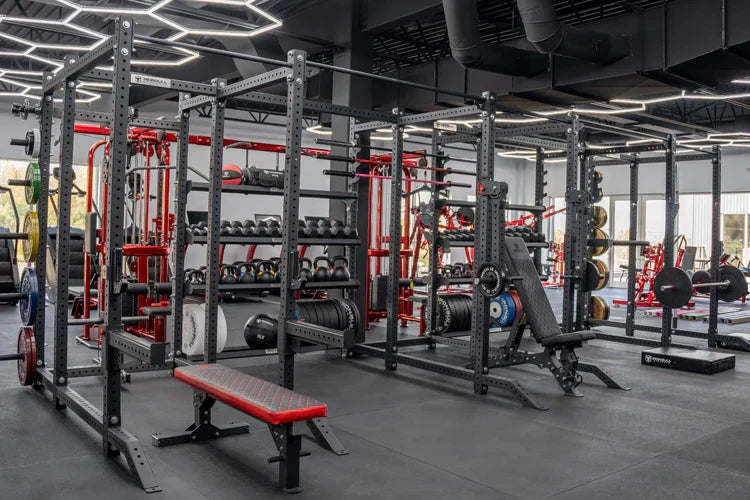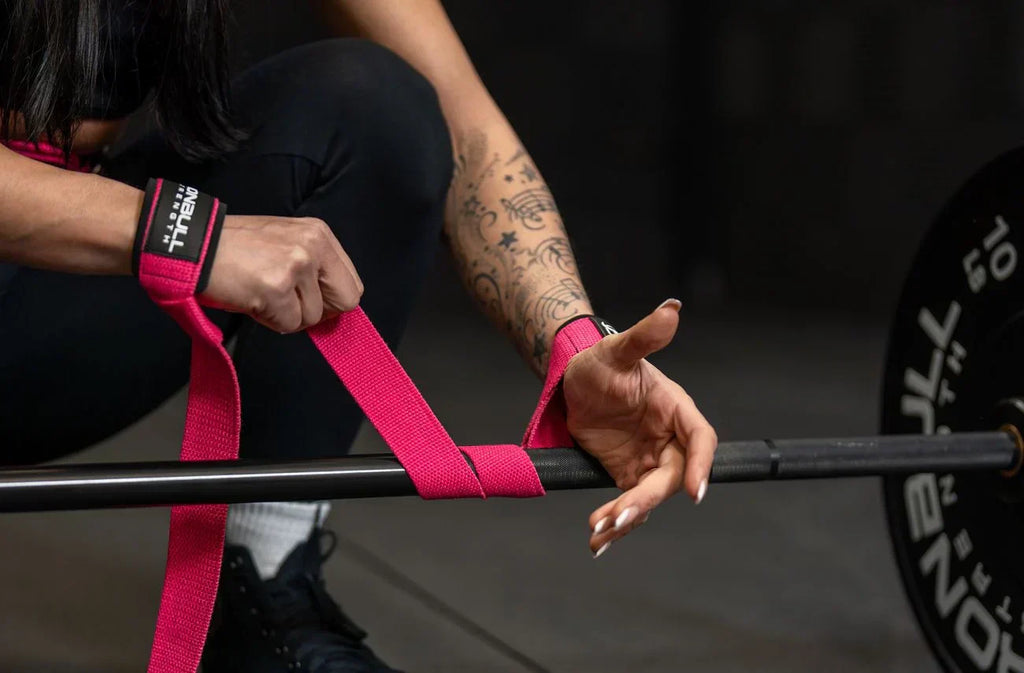Wrist Wraps vs Lifting Straps: Which One Should You Use?

Walk into any gym, and you’ll see lifters with different kinds of gear strapped to their hands and wrists. Some wear thick, elastic bands around their wrists, while others have long straps wrapped tightly around the barbell. These are wrist wraps and lifting straps—two commonly confused yet fundamentally different tools that serve distinct purposes in weightlifting.
Both are useful, but they’re not interchangeable. In this article, I'll break down the differences, benefits, and when to use each for maximum performance.

What Do Wrist Wraps Do?
Wrist wraps are designed to provide support and stability to the wrist joint, especially when lifting heavy weights overhead or pressing. They work by compressing the wrist, limiting excessive movement that could lead to strain or injury. Made from elastic materials like cotton, polyester, or nylon, wrist wraps allow lifters to maintain a neutral wrist position under heavy loads.
So, what are wrist wraps for? They help reinforce the wrist joint, reduce discomfort, and allow you to lift heavier weights with better control. They are particularly useful in exercises like:
-
Bench press
-
Overhead press
-
Clean and jerk
-
Snatch
-
Low-bar back squats
When your wrists are at risk of hyperextension—such as in a heavy pressing movement—wrist wraps provide the necessary reinforcement to keep everything in place.

What Are Lifting Straps For?
Lifting straps, on the other hand, have a completely different function. Their primary role is to assist with grip strength by securing your hands to the bar. If you’ve ever struggled to hold onto a barbell during a deadlift or a heavy row, lifting straps ensure your grip isn’t the limiting factor.
Lifting straps are typically made of durable fabric like leather, nylon, or cotton, and they loop around the wrist and the barbell to improve grip security. Unlike wrist wraps, they don’t stabilize the wrist but instead help prevent grip fatigue and allow you to lift heavier weights for more reps.
They are particularly useful for pulling exercises such as:
-
Deadlifts
-
Rack pulls
-
Barbell rows
-
Shrugs
-
Lat pulldowns
Wrist Wraps vs Lifting Straps: The Key Differences
Understanding weight lifting when to use wraps depends entirely on your goals and the type of movement you’re performing. Here’s how they compare:
Function and Purpose
-
Wrist Wraps: Stabilize and protect the wrist joint during heavy pressing movements.
-
Lifting Straps: Improve grip strength and help hold onto heavier weights in pulling movements.
How They Work
-
Wrist Wraps: Compress and reinforce the wrist, reducing excessive movement and strain.
-
Lifting Straps: Secure the hands to the barbell, reducing grip fatigue.
Best Exercises for Each
-
Wrist Wraps: Bench press, overhead press, squats, and Olympic lifts.
-
Lifting Straps: Deadlifts, rows, shrugs, and high-rep pulling movements.
When to Use Wrist Wraps
Wrist wraps are beneficial when wrist stability is crucial. If you experience wrist pain or feel your wrists bending backward under heavy loads, wraps can prevent discomfort and injury. However, they should not be worn for every set—especially warm-ups—as your wrists should still develop strength naturally.
Use wrist wraps when:
-
Lifting near-maximal weights (80%+ of 1RM) on pressing exercises.
-
You have a history of wrist injuries and need extra support.
-
You’re competing in powerlifting or Olympic weightlifting where wrist integrity is essential.
When to Use Lifting Straps
Lifting straps are great when grip fatigue limits your ability to perform a set effectively. If your back and legs can handle more weight but your grip gives out first, straps allow you to push your strength without being held back by weaker hands.
Use lifting straps when:
-
Performing heavy deadlifts or rack pulls.
-
Doing high-rep pulling sets where grip endurance is a limiting factor.
-
Training back muscles without over-fatiguing your forearms.
Can You Use Both?
Absolutely. Wrist wraps and lifting straps serve completely different purposes, so they can be used together—but not at the same time. For example, if your workout consists of both pressing and pulling movements, you might start with wrist wraps for your bench press and then switch to lifting straps for deadlifts.
Competitive lifters, bodybuilders, and strength athletes often have both in their gym bags. Just be mindful of when you actually need them—overuse can lead to reliance, which may hinder long-term strength development.
Choosing the Right Gear
When selecting wrist wraps or lifting straps, quality matters. Cheap, flimsy gear won’t provide the support or durability needed for heavy lifting. Here’s what to look for:
For Wrist Wraps:
-
Adjustable tightness for flexibility in different lifts.
-
Durable elastic material that offers both support and comfort.
-
A strong thumb loop for easy application.
For Lifting Straps:
-
Heavy-duty material like reinforced cotton or nylon.
-
Comfortable wrist padding to prevent irritation.
-
A secure loop design that’s easy to wrap around the bar.
Why Iron Bull Strength?
When it comes to serious lifting, the right gear isn’t optional—it’s essential. Cheap, flimsy straps and wraps won’t cut it when you’re pushing heavy weight. That’s why Iron Bull Strength designs high-performance wrist wraps and lifting straps engineered for durability, comfort, and maximum support.
Iron Bull Strength Wrist Wraps
- Adjustable Compression – Get the right level of support for any lift.
- Premium Elastic Material – Balances stability and flexibility for optimal performance.
- Reinforced Thumb Loop – Ensures a secure, seamless fit every time.
Iron Bull Strength Lifting Straps
- Heavy-Duty Reinforced Cotton & Nylon – Built to handle serious weight.
- Comfortable Wrist Padding – Prevents irritation so you can stay focused on your lifts.
- Secure Loop Design – Wraps easily around the bar for a strong, reliable grip.
FAQ's
What are the disadvantages of using wrist wraps?
Over-reliance on wrist wraps can weaken natural wrist strength over time, making it harder to lift without them. If wrapped too tightly, they may restrict circulation, causing numbness or discomfort. Additionally, wrist wraps won’t fix poor lifting technique—they provide support, but proper form and wrist mobility should come first.
What are the pros and cons of lifting straps?
Lifting straps improve grip strength, allowing lifters to hold heavier weights for longer, making them useful for deadlifts, rows, and shrugs. They reduce forearm fatigue and help target back muscles more effectively. However, overuse can weaken grip strength and lead to underdeveloped forearms. Straps require some practice to use correctly and shouldn’t replace grip training entirely.
When should you not use wrist wraps?
Avoid using wrist wraps if you’re a beginner still developing wrist strength, during pulling exercises like deadlifts, or for warm-up sets. Overusing them on lighter lifts can lead to dependency and limit long-term wrist resilience. If you experience chronic wrist pain, focus on fixing the underlying issue rather than masking it with wraps.
Are wrist wraps for push or pull?
Wrist wraps are for pushing exercises like bench presses, overhead presses, and dips, providing stability and preventing excessive wrist extension. They do not enhance grip and should not be used for pulling exercises like deadlifts or rows. For pulling movements, lifting straps are the correct tool to improve grip and reduce forearm fatigue.
Final Thoughts: Which One Do You Need?
The decision between wrist wraps vs lifting straps comes down to your training style and needs. If wrist stability and joint support are your priority, wrist wraps are the way to go. But if grip fatigue is limiting your progress, lifting straps can help you lift heavier and longer.
Ideally, every serious lifter should have both in their arsenal. Knowing when to use wrist wraps and when to use lifting straps will enhance your performance, protect against injury, and allow you to push past your limits safely.
If you’re ready to elevate your training, visit Iron Bull Strength to grab a pair of wraps for better stability and lifting straps for stronger pulls. Train smarter, lift heavier, and keep progressing.


